This page covers the Lancia cars produced during the period from 1922 to 1943.
[ Lambda ] [ Dilamda ] [ Astura & Artena ] [ Augusta ]
All the later cars are covered on individual pages (see 'Models') whilst the earlier cars will be added at a later date.
The first cars were almost all bodied in-house by
Lancia, the new load-bearing body reducing the scope for the coachbuilders,
although a few did make some attempts. The first four series' saw small
improvements such as new pistons, different windscreen designs and a change
in supplier of the electrical system. The fifth series saw the adoption
of a four-speed gearbox whilst the sixth series used a stretched wheelbase
and was also produced as a chassis for the coachbuilders.
The seventh series saw an increased capacity engine
producing 10bhp more, and was produced with both the longer and shorter
wheelbases, a feature also used in the following eighth series. The latter
also received an even larger and more powerful engine to offset the ever
increasing weight. This was the last production model and they ceased to be built in 1931.
Lambda's were also used extensively in motorsport
in various guises, mostly by private entries, albeit supported by the factory.
Approximate production numbers :
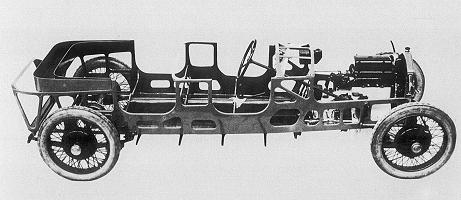 Presented for the first time in 1922 the Lambda incorporated numerous technical innovations
and is still hailed as one of the significant models in the history of
the automobile. The biggest single innovation, and one which was copied
by all car manufacturers around the world, was the adoption of a load-bearing
body and the deletion of the separate chassis. Another first was the use
of independent front suspension. The engine was also novel, using a cast-aluminium
engine block, a narrow-angle V4 layout and high (for the period) engine speeds.
Presented for the first time in 1922 the Lambda incorporated numerous technical innovations
and is still hailed as one of the significant models in the history of
the automobile. The biggest single innovation, and one which was copied
by all car manufacturers around the world, was the adoption of a load-bearing
body and the deletion of the separate chassis. Another first was the use
of independent front suspension. The engine was also novel, using a cast-aluminium
engine block, a narrow-angle V4 layout and high (for the period) engine speeds.
Series I to V : 4,200
Series VI : 1,300
Series VII : 1,300
Series VIII and IX : 4,403
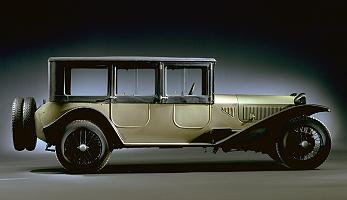 |
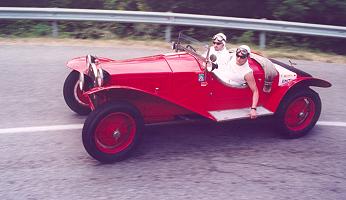 |
Technical Details
| Driveline | longitudinal engine at front with rear wheel drive |
| Engine | 2119cc (75x120mm) V4 sohc with 49bhp @ 3,250rpm
2370cc (79,37x120mm) V4 sohc with 59bhp @ 3,250rpm 2568cc (82,55x120mm) V4 sohc with 69bhp @ 3,500rpm |
| Suspension | front : Independent sliding pillar
rear : solid axle with leaf springs wheelbase : 3100mm or 3420mm depending on variant |
| Brakes | mechanically operated drums on all four wheels |
| Gearbox | initially 3 then 4 speed manual |
Three wheelbases were used during the life of the
Dilambda. Initially 3480mm this was shortened to 3290mm in the second series,
but another version with a 3475mm wheelbase was then added. The cars were
continually improved through the years of production with changes to the
transmission, brakes, instrumentation, controls and together with the large
number of different bodies fitted by various coachbuilders this meant that
virtually no two cars were identical.
The Dilambda was a large car, the finished vehicle
rarely weighing less than two tons, and was built in correspondingly small
numbers. The total production was around 1,700 (1,000 first series and
700 second series) from 1928 to 1938.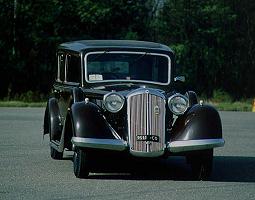 The Dilambda was born as a project for the US market, to be built at a new
facility in that country, but when the entire venture collapsed the car
was modified for the European market and emerged in 1928. Returning to
a chassis construction, albeit with innovative features such as the structural
fuel tank, the Dilambda used a new 4-litre V8 engine. The independent front
suspension used a system similar to the Lambda.
The Dilambda was born as a project for the US market, to be built at a new
facility in that country, but when the entire venture collapsed the car
was modified for the European market and emerged in 1928. Returning to
a chassis construction, albeit with innovative features such as the structural
fuel tank, the Dilambda used a new 4-litre V8 engine. The independent front
suspension used a system similar to the Lambda.
Technical Details
| Driveline | longitudinal engine at front with rear wheel drive |
| Engine | 3956cc (79.37x100mm) V8 sohc with 100bhp @ 3,800rpm |
| Suspension | front : Independent sliding pillar
rear : solid axle with leaf springs wheelbase : 3480mm, 3290mm or 3475mm depending on variant |
| Brakes | mechanically operated drums on all four wheels |
| Gearbox | 4 speed manual |
With the Dilambda meeting the demand for a large
vehicle, Lancia went about developing a new smaller vehicle, to be available
both as a base model and a more luxurious model, sharing the main basic
layout. The result was the Artena (base model) and the Astura (luxurious
model). The resulting common chassis drew heavily on the design of the
preceding Lambda and Dilambda, albeit with a sensible dose of cost saving
measures. The front and rear suspension also followed the same basic layout as those models.
For the Artena it was decided to use a much developed
version of the old V4 with numerous major modifications such as the adoption
of a chain drive for the camshaft. Significantly, it was mounted using
silentblocks, which drastically reduced the vibrations passed into the
chassis. The Astura, on the other hand, got a simplified and reduced capacity
version of the existing V8.
With time the number of variants increased, with
different wheelbases a larger engine for the Astura (from the third series).
With the cessation of production of the Dilambda in 1938 the Astura took
over as the top-of-the-range Lancia and became more luxurious, whilst the
Artena became more utilitarian given the poor financial conditions of the
times. The Astura became a favourite of the coachbuilders and many, many
different versions were built by almost all of the leading names.
Production volumes :
Astura : Series I & II : 1,246; Series III & IV : 1,665
Artena : Series I & II : 3,020; Series III : 2,040; Series IV : 507
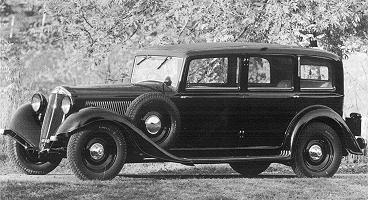 |
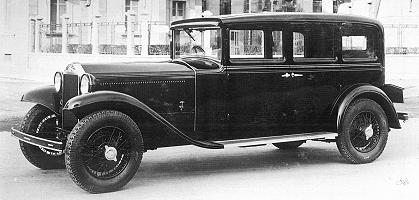 |
Technical Details
| Driveline | longitudinal engine at front with rear wheel drive |
| Engine | Astura :
2604cc (69,85x85mm) V8 sohc with 72bhp @ 4,000rpm 2973cc (74,61x85mm) V8 sohc with 82bhp @ 4,000rpm Artena : 1927cc (82,55x90mm) V4 with 55bhp @ 4,000rpm later with 51bhp @ 3,800rpm |
| Suspension | front : Independent sliding pillar
rear : solid axle with leaf springs wheelbase : Astura : 3177mm, 3100mm, 3330mm or 3475mm depending on variant Artena : 2990mm, 2950mm, 3140mm or 3180mm depending on variant |
| Brakes | mechanically operated drums on all four wheels
some later cars had hydraulically operated drums |
| Gearbox | 4 speed manual |
The first 'small' Lancia designed to be produced
in large volumes, the Augusta was first shown to the public in 1932. Returning
to a true load-bearing bodyshell, where even the roof was part of the structure,
the B-pillars were also omitted. A chassis version was also produced for
the coachbuilders from 1934. The engine was a new, small capacity V4.
Although officially no series' were designated, various
modifications and improvements were incorporated, such as the intoduction
on 1934 of a version 'Lusso' with a more luxurious trim, spoked wheels,
two-tone paint and other details. This only lasted for a short while before
the two versions were again unified, the result mixing details from both versions.
Production of the Augusta was also undertaken at
a new factory in France, near Paris, from 1934 to 1938. The car was known
as the Belna but was identical in almost every respect to the Italian built
cars. Chassis' were also built their for the French coachbuilders.
Total production, which ceased in 1937 was around
20,000 cars and chassis'. Of these, around 2,500 cars and 600 chassis'
were produced in France.
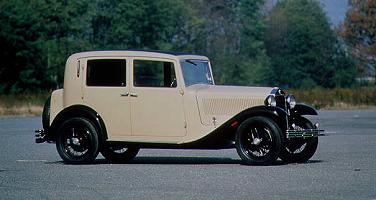 |
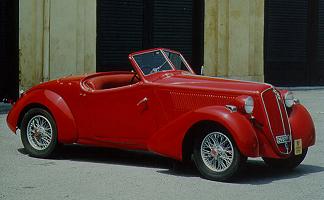 |
Technical Details
| Driveline | longitudinal engine at front with rear wheel drive |
| Engine | 1196cc (69,85x78mm) V4 with 35bhp @ 4,000rpm |
| Suspension | front : Independent sliding pillar
rear : solid axle with leaf springs wheelbase : 2650mm |
| Brakes | hydraulically operated drums on all four wheels |
| Gearbox | 4 speed manual |
For books on Lancia see our Online Bookstore
There is also a list of all our picture galleries (including museums, motorshows and various events).
Wallpapers/Desktop Backgrounds of numerous Lancia's are available to download.
See also our Lancia advertisements gallery, where several adverts can be seen.
Links
An excellent and detailed Artena website (in Italian).
Lambda, Dilambda, Astura, Artena & Augusta comment form
Use the buttons at the top to navigate further, or
Copyright © 2000 to 2008 CarsfromItaly